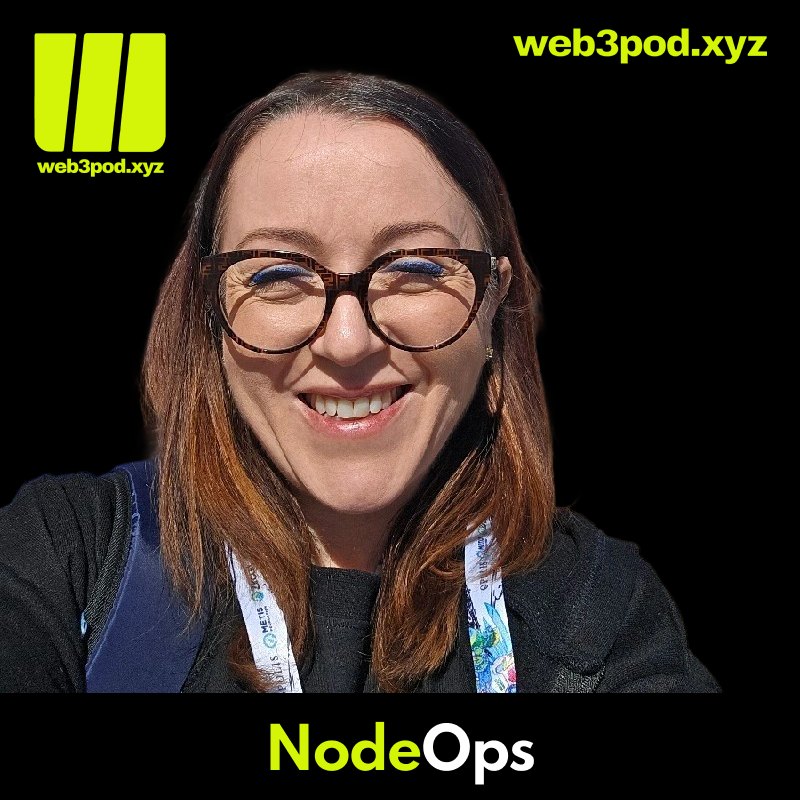From Google to DePIN: How NodeOps Is Quietly Scaling Decentralized Infrastructure

The shift from Web2 to Web3 infrastructure isn’t just a technical upgrade—it’s a complete rethinking of who builds, who benefits, and who gets access.
That’s the essence of this episode, where Alex from NodeOps unpacks how she went from driving Web3 strategy at Google to helping lead one of the fastest-growing DePIN (Decentralized Physical Infrastructure Network) platforms in the space.
And this isn’t theory. NodeOps has already:
- Generated $3.8 million in revenue
- Onboarded 700,000 users
- Attracted 24,000+ compute providers
- Secured over $150 million in assets under management
From Nodes-as-a-Service to Infrastructure That Thinks
NodeOps began by offering nodes-as-a-service—helping developers quickly spin up infrastructure across 60+ blockchains. But it quickly evolved into something more:
- AI-Powered Tools: NodeOps built a Security Hub that actively detects threats using machine learning.
- Agent Terminal: A command center for developers to interact with blockchain networks using intelligent prompts and automation.
- Staking + RPC Infra: With deep integrations and support for high-throughput dApps.
According to Alex, the key was building real tools before launching a token—a decision that set NodeOps apart from the noise.
Mint and Burn, Backed by Math
One of the most fascinating pieces? Their dynamic tokenomics.
Instead of fixed inflation or one-size-fits-all emissions, NodeOps applies principles from optimal control theory. The mint and burn rates adapt based on real protocol usage, acting like a financial thermostat that responds to demand.
This ensures the token isn't just speculative—it’s functional.
Why Infra Needs Good Vibes, Too
Alex also shared her philosophy on Web3 marketing. At Google, she learned how to scale products. At NodeOps, she’s applying those lessons to an entirely new type of user base.
Marketing in Web3, she says, is like setting “room ambience.”
That means building vibes through community engagement, dev tools for productivity, educational content for accessibility, and a token model that unites everyone—from retail holders to power users.
It’s not about a single message. It’s about designing multi-channel experiences that resonate across builder tribes, institutions, and everyday users.
The Cloud is Cracking—DePIN is Rising
With AWS and GCP prices soaring, institutions are quietly exploring alternatives. NodeOps is positioning itself to meet that demand, offering not just cheaper infra but more resilient, more distributed, and more inclusive infrastructure.
And this is where the Global South becomes a key focus.
From Nigeria to India, billions of users are coming online with limited access to affordable compute. NodeOps wants to change that—not with a new data center, but with a network of providers, stakers, and developers contributing from around the world.
What’s Next for NodeOps?
NodeOps isn’t slowing down. They’re:
- Expanding their product stack to support more use cases
- Building without relying on “hype cycles”
- Growing a community of builders, stakers, and validators
- Creating accessible infrastructure for the next 6 billion users
If you’re a founder, a developer, or even just Web3-curious, now might be a good time to explore what NodeOps is doing.
Links to Learn More
Listen on Spotify: Open Episode
Apple Podcasts: Open Episode
Final Thoughts
NodeOps isn’t just another Web3 infra play. It’s a living example of what happens when experienced operators skip the hype and focus on product, community, and smart economics.
If this episode tells us anything, it’s that the future of infrastructure won’t be built in boardrooms—it’ll be built by networks like NodeOps, running quietly but powerfully in the background of the decentralized web.




